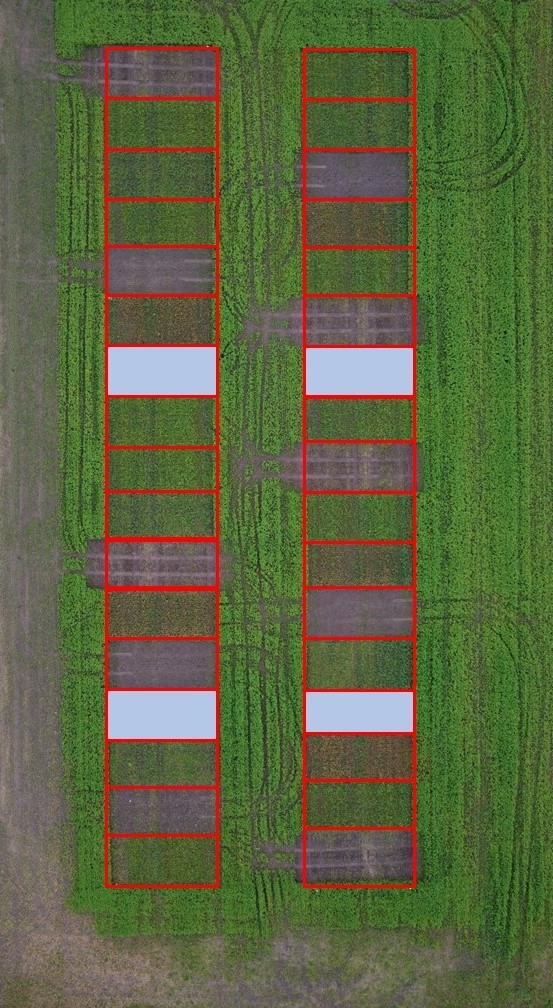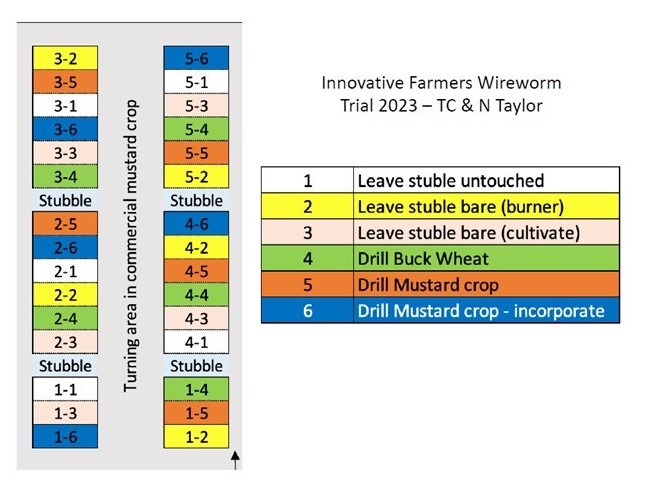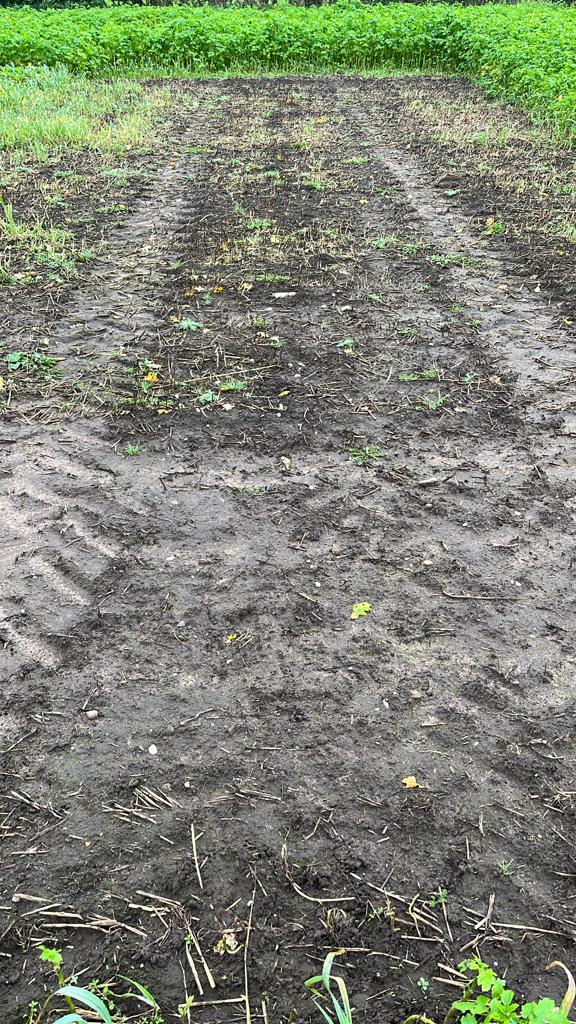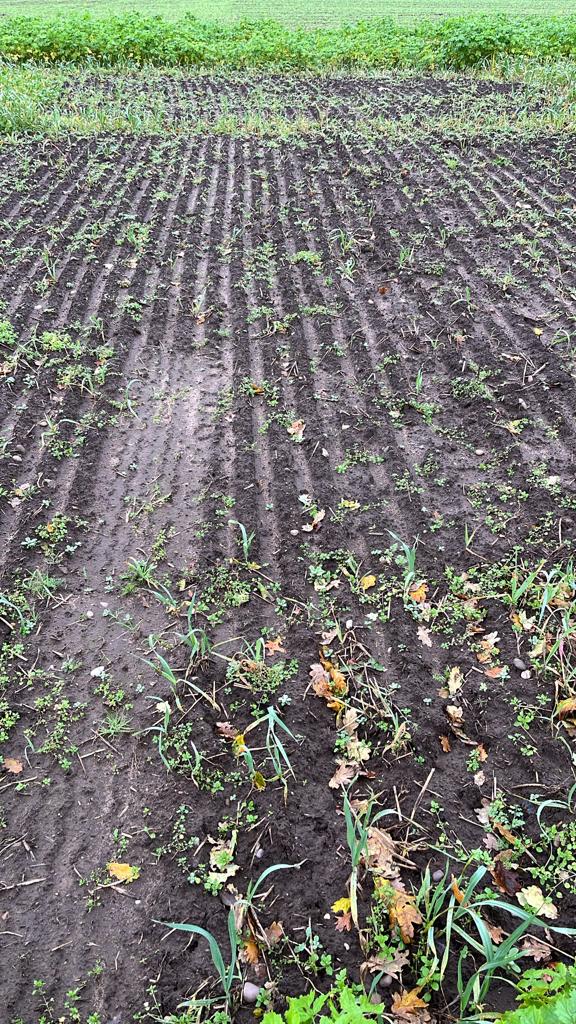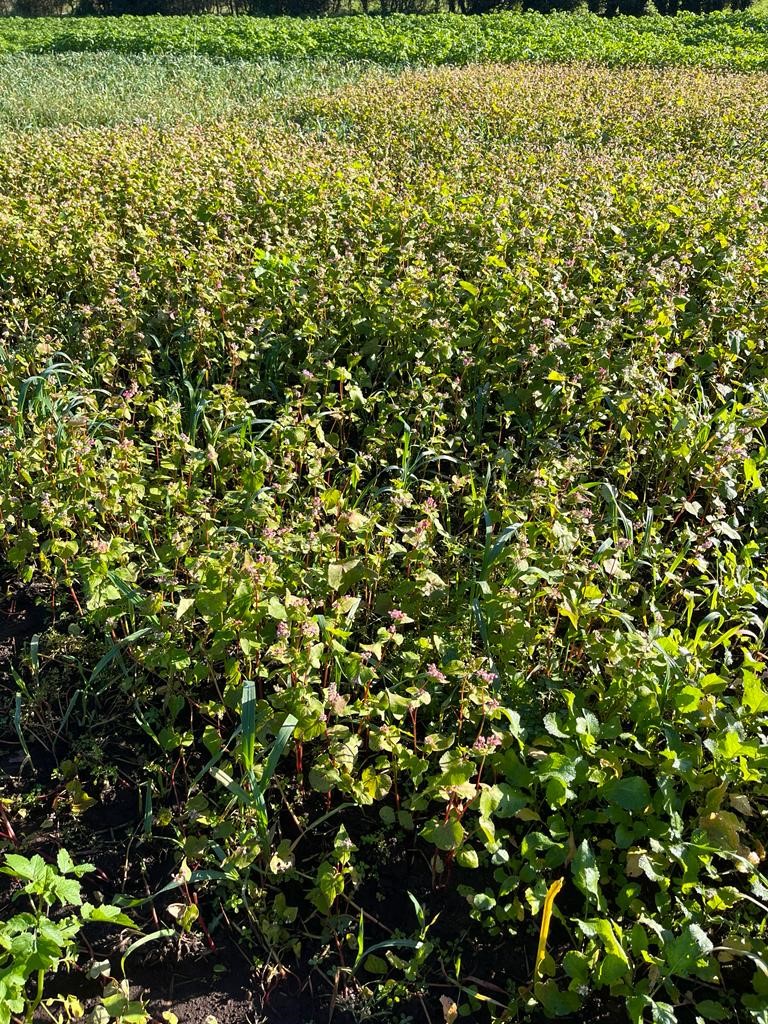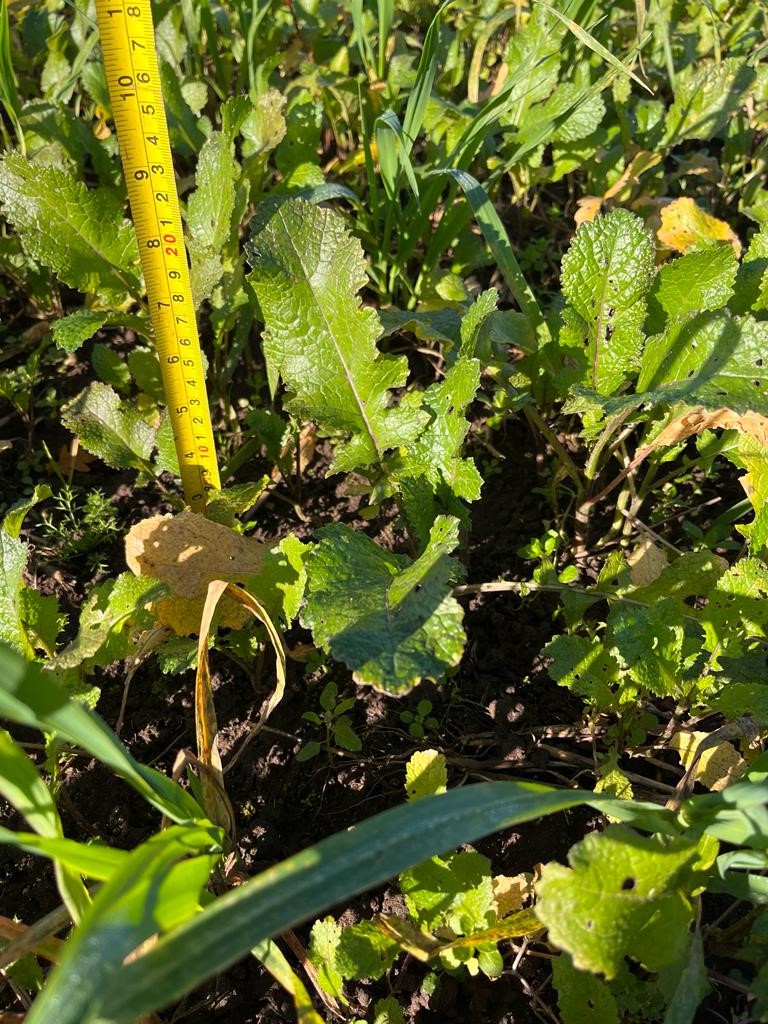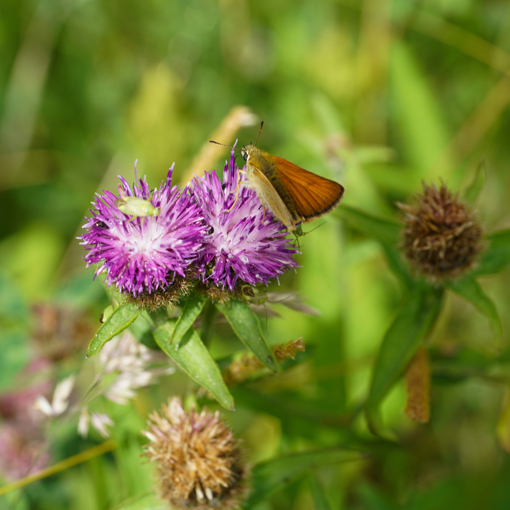The wireworm field lab is exploring the viability of different cover crops and cultivation timing on wireworm population and the effect on following potato crops. Concerns around wireworm damage and its effect on growers’ ability to grow crops has intensified in recent years, with a huge increase in the pest pressure seen across the country.
In this field lab, we are exploring control methods by harnessing the chemical properties of mustards and buckwheat in rotations to ward off the pest. The field lab group consists of potato growers, agronomists and researchers that will undertake core sampling to identify how buckwheat and biofumingant crops affect juvenile populations, compared with stubble. It is known that some species of cover crops have allelopathic effect on wireworm particularly in the juvenile stage.
Hugh Blogg - co-ordinator of the field lab and Horticultural Advisor at the Soil Association - shares an update on recent progress from the trial.
The cooler November temperatures are now arriving and this means the trial cover crops will slow and stop growing. For mustard this has proven an issue as it has only reached a height of 20cm, when ideally it would be a metre high. The mustard is being trialled for its biofumigation properties – its ability to release naturally produced compounds and potentially control wireworm populations. For maximum effect the mustard would be close to flowering, but a late planting and cool weather has stunted its growth.
The plot incorporating the mustard is due to happen any moment when there is a dry spell so as not to turn the site into a mud bath. As with any trial, optimum conditions are not always reached but everything gets recorded and analysed later on so that future trials can build on the learnings.
|
Plot |
Progress |
|
1. Leave stubble untouched |
Lots of weed growth as expected |
|
2. Leave stubble bare (burner) |
Clear of weeds |
|
3. Leave stubble (cultivate) |
Clear of weeds |
|
4. Buckwheat |
60cm tall, stopped growing |
|
5. Mustard crop |
20cm tall, stopped growing |
|
6. Mustard crop - incorporate |
20cm tall, stopped growing. Waiting for dry enough conditions to spade (likely by the end of Nov 23). |
Wireworm population benchmarking
Soil samples were taken in early September and the results were returned at the end of October. The aim of this round of sampling was to get a benchmark for the wireworm population present in the trial plots. Surprisingly, the results returned with very low numbers of wireworm across the site. This had been partially anticipated by wireworm expert Martyn Cox, who had questioned whether the initial sampling was even a good idea.
Juveniles are of particular interest but the difficulty is that they are also the most difficult to find. Previous studies undertaken by Salt and Hollick in the 1940s did manage to monitor wireworm using a similar testing protocol, but the liquid used to ‘float off’ the larvae was more hazardous than used nowadays. Martyn Cox commented:
“We know there was adult male activity in the site and we have seen larger larvae there. We knew from the get go that it would be tricky to find the year one larvae - they are 1.5mm at hatching and I know that in a cool autumn as we have experienced, growth will be slower than it might have been. Also adult activity was lower in general than it was in 2022 this year.” Martyn Cox, Wireworm Specialist
There will be another round of testing in late Spring, where another 300 kilos of soil will get sent off to ADAS for assessment. It is hoped that this will be more fruitful with the right timings in mind. With the location of the trial sites now established, different methods of testing can also be trialled in the future.
